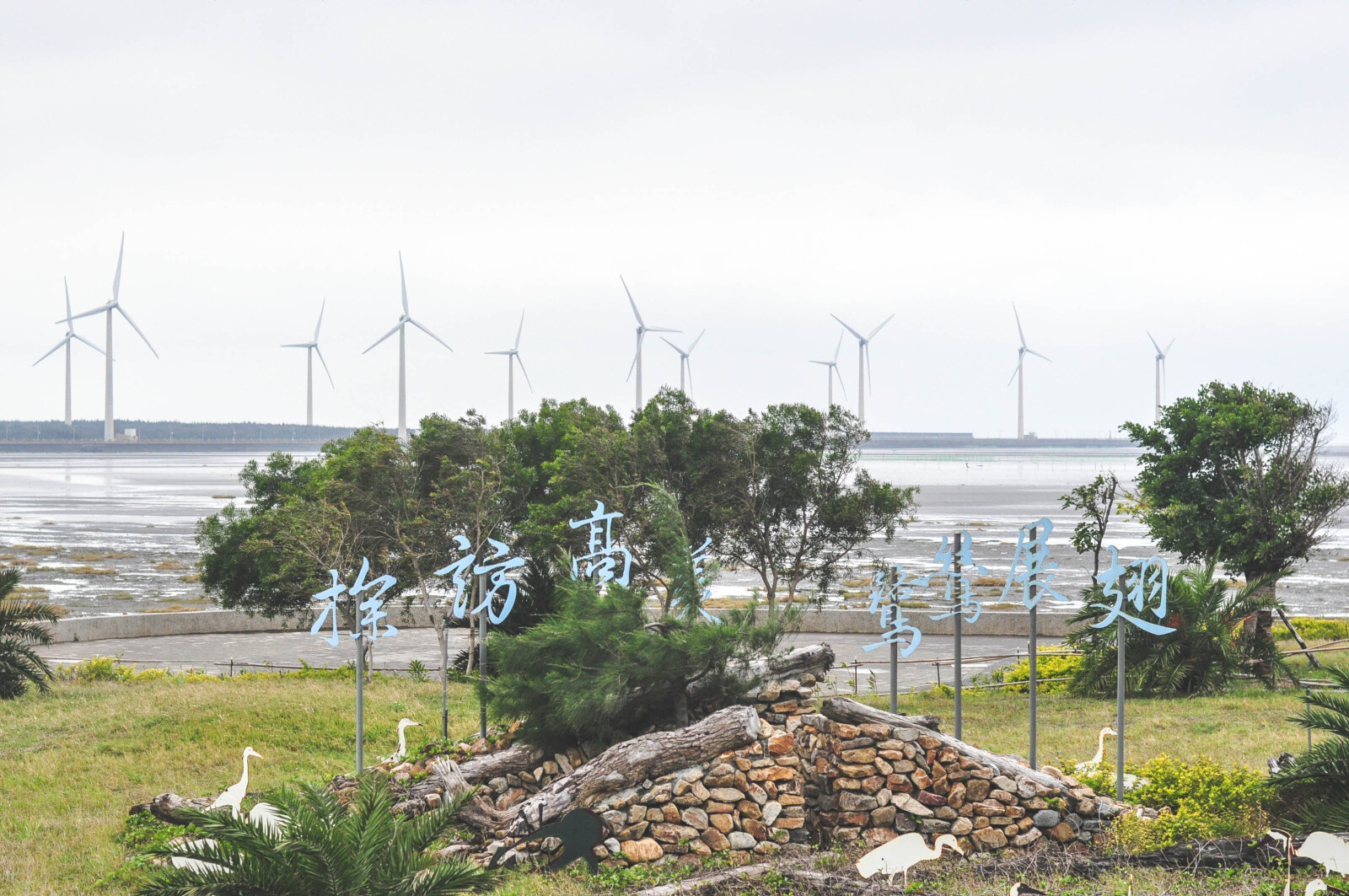The Impact of Mass Tort Environmental Lawsuits on Corporations
This article critically examines the rapidly evolving field of climate change litigation, with a particular focus on class actions.

In recent years, there has been an exponential increase in climate-related lawsuits worldwide, reflecting the growing urgency to mitigate the impacts of global warming.
This surge in litigation is significantly reshaping the legal landscape, prompting a need for a comprehensive understanding of the complex issues involved.
The article delves into various aspects of climate litigation, including the basics of environmental law, the rise in group lawsuits, the identification of potential plaintiffs and defendants, the crucial role of scientific evidence, defense strategies, and notable case studies.
It also provides a foresight into the future of climate litigation and highlights the instrumental role of legal practitioners in combating climate change.
This comprehensive review aims to provide a roadmap for navigating the intricate legal terrain of climate change class actions.
Key Takeaways
- Environmental law is pivotal in climate change litigation and plays a significant role in shaping the legal landscape of climate change class actions.
- Group lawsuits in the climate arena are increasing globally, driven by climate activism, scientific evidence, and shifting societal attitudes towards environmental protection.
- Potential plaintiffs in climate cases include individuals, communities, and businesses affected by climate change, and international cooperation is important for harmonizing legal definitions.
- Entities contributing to greenhouse gas emissions, especially corporations in the fossil fuel industry, can be potential defendants in climate suits, and climate lawsuits can intersect with human rights.
Understanding the Basics of Environmental Law
Environmental law, foundational to climate change litigation, encompasses statutes, regulations, and legal principles governing the interaction of humanity with the natural environment. It is a complex and multifaceted area of law that intersects with science, policy-making, and advocacy. It is primarily concerned with the preservation, conservation, and protection of the environment, with an emphasis on managing activities that affect the environment detrimentally.
Integral to the understanding of environmental law is the development of environmental policy. Environmental Policy Development is a process involving the identification of environmental problems, the formulation of strategies to address these problems, and the implementation of these strategies through legislation, regulations, and other policy instruments. It is a dynamic process that requires constant monitoring, evaluation, and adjustment to ensure its effectiveness.
The role of Green Legislation Advocacy is equally important in the context of environmental law. Advocacy groups contribute to the formulation and implementation of environmental policies and laws by raising public awareness, lobbying decision-makers, and litigating issues in court. They play a critical role in shaping and influencing environmental law.
Environmental law plays a pivotal role in climate change litigation. Class actions allow groups of individuals to collectively bring a lawsuit against entities responsible for contributing to climate change. Thus, a deep understanding of environmental law is crucial in order to navigate the legal landscape of climate change class actions effectively. It is through the mechanisms of environmental policy development and green legislation advocacy that environmental law can be leveraged to mitigate the impacts of climate change.
The Rise of Group Lawsuits in the Climate Arena
The climate arena is witnessing an unprecedented surge in group lawsuits, as communities, activist groups, and individuals increasingly resort to legal mechanisms to hold corporations and governments accountable for their contributions to global warming. This trend, underpinned by the growing recognition of climate change's detrimental impacts, is reshaping the traditional dynamics of environmental litigation.
The rise of such legal actions is significantly influenced by climate activism's impact. Activist groups, backed by compelling scientific evidence, are not only raising awareness about the dire consequences of inaction on climate change but are also encouraging affected communities to seek legal redress. Their efforts have been instrumental in initiating numerous lawsuits worldwide, challenging the environmental practices of fossil fuel companies and the policies of governments that permit such practices.
Policy influence on climate lawsuits cannot be understated. Regulatory frameworks, both national and international, play a pivotal role in shaping the direction of these lawsuits. Policies that fail to effectively address climate change provide a fertile ground for group lawsuits. These lawsuits often aim to compel governments and corporations to strengthen their environmental regulations and to implement more sustainable practices.
The increasing trend of group lawsuits in the climate arena underscores the urgency of the climate crisis and the growing dissatisfaction with inadequate policy responses. It also reflects a significant shift in societal attitudes towards environmental protection, with communities and individuals demonstrating their willingness to fight for their environmental rights. Such legal actions are not just about seeking compensation for damages, but also about demanding systemic changes to mitigating global warming.
Identifying Potential Plaintiffs in Climate Cases
Identifying potential plaintiffs in climate cases necessitates an understanding of those most directly affected by the adverse impacts of global warming. The potential plaintiffs primarily include individuals, communities, and businesses that are bearing the brunt of climate change-induced natural disasters, sea-level rise, and extreme weather conditions. These might encompass coastal communities facing inundation, farmers experiencing crop failure due to unpredictable weather patterns, and businesses suffering from supply chain disruptions.
The identification process also involves an analysis of the existing climate legislation at national and international levels. The identification process becomes complex due to the diverse legal systems and regulatory frameworks across the globe. In this context, international cooperation becomes pivotal in harmonizing legal definitions, establishing liability, and determining the appropriate jurisdiction for climate cases.
The potential for climate litigation is growing, and there is a need for legal frameworks that can adequately address the complexity of the issues involved. Some countries have already started to adopt such frameworks, but the process is far from uniform and is often subject to political and economic considerations.
There is a pressing need, thus, for a more comprehensive and nuanced approach to identifying potential plaintiffs in climate cases. This approach must consider the multiple layers of vulnerability and the differential impacts of climate change. It must also take into account the evolving nature of climate science and the need for adaptive legal strategies.
As the legal landscape of climate change continues to evolve, so too will the ways in which potential plaintiffs are identified and their cases are brought to court. This necessitates ongoing research, dialogue, and collaboration among legal scholars, practitioners, and policymakers.
Recognizing Potential Defendants in Climate Suits
Recognizing potential defendants in climate suits entails an examination of entities contributing significantly to greenhouse gas emissions and those failing to mitigate or adapt to climate impacts. The legal landscape is becoming increasingly populated with cases where corporations, governments, and other entities are held liable for their role in climate change.
Climate litigation's impact on corporate behavior has become a critical aspect of this growing legal realm. Corporations, particularly those in the fossil fuel industry, have become prime targets for climate suits due to their substantial contribution to global greenhouse gas emissions. These corporations are accused of neglecting their corporate social responsibilities, including the obligation to transition towards more sustainable practices. The intersection of climate lawsuits and human rights further expands the pool of potential defendants. Governments and public authorities can face legal action if they fail to protect their citizens' rights to a healthy environment, as mandated by international human rights law.
The recognition of potential defendants is not limited to entities directly contributing to emissions. Increasingly, parties that fail to adequately respond to climate risks or neglect to implement appropriate adaptation measures are also facing legal scrutiny. This includes urban authorities who do not consider climate change impacts in their infrastructural planning or financial institutions that continue to invest heavily in fossil fuels despite their known environmental damage.
Thus, the legal landscape of climate change class actions is broad and evolving, encompassing a wide array of potential defendants. It is a dynamic field that continually pushes the boundaries of accountability, urging entities to reconsider and adapt their practices in the face of a warming planet.
The Role of Scientific Evidence in Litigation
In understanding the complexities of climate-related lawsuits, the incorporation of scientific evidence plays a pivotal role. This evidence, often drawn from climate science, provides the basis for arguments relating to causation and harm, which are integral to most climate change class actions. However, the use of such evidence in litigation presents its own unique challenges, including issues of scientific misrepresentation and evidence admissibility.
The concept of scientific misrepresentation pertains to the distortion or misinterpretation of scientific facts or findings, which can potentially influence the outcome of a lawsuit. It is therefore essential for the legal parties involved to ensure the accurate representation of scientific evidence in their arguments. This can be achieved through rigorous fact-checking and the consultation of experts in the field of climate science.
On the other hand, the issue of evidence admissibility pertains to whether or not the scientific evidence provided meets the necessary standards to be accepted in a court of law. In many jurisdictions, for a piece of evidence to be admissible, it must be relevant, reliable, and not prejudicial. Therefore, determining the admissibility of scientific evidence in climate change litigation requires careful evaluation of its relevance to the case at hand, its reliability in terms of the methods used to obtain it, and its potential impact on the fairness of the proceedings.
The integration of scientific evidence in litigation, while potentially challenging, is crucial in the legal landscape of climate change class actions. It not only strengthens the arguments of the parties involved but also aids in the pursuit of justice in these crucial and complex cases.
Challenges Faced by Plaintiffs in Climate Litigation
Following an in-depth examination of the pivotal role of scientific evidence in climate litigation, it is essential to pivot towards exploring the complexities and challenges faced by plaintiffs in such cases.
Navigating the labyrinthine legal landscape of climate change class actions is an arduous task for plaintiffs. Firstly, the costs associated with these lawsuits are often prohibitive. Litigation Financing, a mechanism to fund lawsuits, has emerged as a potential solution. It entails third-party companies financing a lawsuit in exchange for a portion of the settlement or judgment. However, the ethical implications and potential for abuse of this system necessitate stringent regulations.
Another fundamental challenge is establishing causal links between defendants' actions and the climate change damage inflicted. Climate change is a global issue, contributed to by countless entities over an extended period. Pinpointing the responsibility of a specific entity can be legally intricate and scientifically complex. Furthermore, the effects of climate change are often indirect and long-term, adding another layer of complexity to the causality argument.
Climate Justice is a term frequently used in this context. It emphasizes that the impacts of climate change are disproportionately borne by certain communities, typically those with the least resources to mitigate them. However, translating this concept into legal arguments is a monumental task. Courts often require direct, tangible harm to recognize a legal claim, something not easily demonstrable with climate change impacts.
Thus, while plaintiffs in climate litigation grapple with numerous challenges, their struggles epitomize the broader fight for Climate Justice. Their efforts, albeit fraught with obstacles, are crucial in holding entities accountable for their contribution to climate change.
Defense Strategies in Climate Lawsuits
Shifting focus to the opposite side of the courtroom, it becomes evident that defendants in these environmental lawsuits employ a variety of strategic approaches to challenge the claims made against them. Defense strategies often involve refuting the causation and attribution of climate change damages, challenging the standing of plaintiffs and questioning the suitability of litigation as a tool for addressing climate change issues.
At the forefront of these strategies, defendants employ expert witnesses and scientific evidence to challenge the direct causation and attribution of climate change damages. Defendants argue that the connection between their actions and the alleged damages is too indirect and speculative to meet the legal requirements for causation.
Furthermore, defendants frequently challenge the standing of plaintiffs. They contend that plaintiffs lack the necessary direct and personal injury required for standing in climate change lawsuits. They also question the plaintiffs' ability to demonstrate that the alleged injury is traceable to the defendants' actions and can be redressed through a favorable court decision.
In relation to the policy impact, defendants often argue that climate change is a global issue requiring international and national policy solutions rather than judicial intervention. They assert that courts are not the appropriate forum for setting emissions standards or climate policies, as these are complex issues better suited to the legislative and executive branches of government.
Litigation financing is also a significant factor in defense strategies. Defendants, often large corporations, have substantial resources at their disposal to fund protracted legal battles. This financial muscle can be a potent weapon, potentially discouraging less well-funded plaintiffs from pursuing their claims.
Notably, these defense strategies, while effective in individual cases, may not ultimately deter the growing global trend towards climate change litigation.
Successful Climate Lawsuits: Case Studies
Examining a selection of successful environmental lawsuits provides valuable insights into the evolving dynamics of this emerging field of law. These cases demonstrate the increasingly powerful role of climate litigation in shaping policy and corporate behaviour, as well as the potential for climate legislation reforms to influence future legal outcomes.
One notable case is the Urgenda Foundation v. The State of The Netherlands (2015), where the Dutch Supreme Court ruled that the government had a legal duty to prevent dangerous climate change and ordered it to cut the nation's greenhouse gas emissions. This landmark ruling has set an international precedent and spurred similar lawsuits worldwide, contributing to the proliferation of international climate litigation.
Similarly, in the case of Juliana v. United States (2015), although the plaintiffs were ultimately unsuccessful, the District Court acknowledged the government's role in causing climate change, setting a legal precedent for future climate lawsuits.
In Germany, the case of Neubauer et al. v. Germany (2021) was also groundbreaking. The Federal Constitutional Court ruled that the government's climate protection measures were insufficient, infringing on the rights of future generations. This ruling has had a significant impact on climate legislation reforms, forcing the government to revise its climate protection law to include stricter emission reduction targets.
These case studies underscore the potential of climate litigation as a tool for compelling governments and corporations to take more decisive action on climate change. They underscore the dynamic interplay between litigation, policy, and the urgent need for climate legislation reforms. They also highlight the increasing recognition of the rights of future generations in climate law, a trend that is likely to shape the future of international climate litigation.
The Future of Climate Litigation
Continuing the discourse, it is critical to explore the prospective trajectories and implications of climate litigation. The future of climate litigation is anticipated to be a dynamic and evolving landscape, underscored by the increasing recognition of the urgency of climate action.
The potential developments in climate litigation are likely to be influenced by multiple factors. The evolving nature of climate legislation, for example, could shape the contours of future litigation. More comprehensive and stringent climate laws could pave the way for more robust legal actions, as they provide a stronger legal basis for litigation. Conversely, weaker or less explicit laws could potentially limit the scope and effectiveness of litigation.
Additionally, the broader political, economic, and social context in which climate litigation occurs will also play a crucial role. The litigation impacts are likely to be more pronounced in jurisdictions where there is strong public and political support for climate action. Conversely, in jurisdictions where such support is lacking, litigation may face significant hurdles.
Furthermore, the future of climate litigation may be shaped by the development of legal doctrines and principles. For example, the recognition of the right to a healthy environment as a fundamental human right could significantly enhance the potential of climate litigation.
Within this context, it is clear that the future of climate litigation is likely to be a complex and multifaceted one, shaped by a myriad of factors. The evolving legal landscape, the broader socio-political context, and the development of legal doctrines and principles will all play a critical role in shaping the trajectories and implications of future climate litigation.
Your Role in the Fight Against Global Warming
In light of the escalating threat of global warming, it becomes paramount to consider the individual's role in mitigating its impacts. This involves understanding the personal carbon footprint and actively reducing it through green technology adoption.
The idea of personal carbon footprint is premised on the understanding that every individual, through their daily activities contributes to greenhouse gas emissions, which exacerbate climate change.
The adoption of green technology forms an integral part of the process to reduce personal carbon footprint. This could involve the use of energy-efficient appliances, renewable energy sources, electric vehicles, and environmentally friendly practices in waste disposal, among others. The transition to green technology, besides reducing greenhouse gas emissions, often leads to cost savings in the long term through energy efficiency.
The legal landscape of climate change class actions provides evidence of the increasing acknowledgement of the role of corporate entities in climate change. However, it is important to note that the fight against global warming is not the sole responsibility of corporations and governments. Individuals also hold a substantial stake in this fight. Actively reducing one's personal carbon footprint and embracing green technology are practical actions that individuals can adopt.
The fight against global warming, therefore, is a collective responsibility that calls for concerted efforts from all stakeholder groups. As the impacts of climate change become more severe, the need for individuals to play their part in mitigating these effects becomes more urgent. While climate litigation continues to advance, it is necessary for individuals to also take up their roles in the fight against climate change.
Frequently Asked Questions
What is the process for filing a climate change class action lawsuit?
Initiating a climate change class action lawsuit involves several steps.
Firstly, Class Action Eligibility must be established by demonstrating a large group of people are affected similarly by the same issue.
Following this, a complaint is filed in court, detailing how the defendant's actions contribute to climate change.
Previous Climate Lawsuit Precedents can provide strategic guidance.
The process requires meticulous legal work, informed by scientific evidence and persuasive arguments to substantiate the climate-related harms.
How long does a typical climate change lawsuit take to reach a verdict?
The duration of a typical climate change lawsuit until a verdict is reached can vary considerably, often spanning several years. Factors such as the complexity of the case, the need for expert testimony, and the availability of lawsuit funding can significantly influence timelines.
In addition, a verdict appeal process may extend the duration further. Therefore, litigants should be prepared for a potentially long and arduous legal journey when initiating a climate change lawsuit.
How are damages typically calculated in successful climate change lawsuits?
In successful climate change lawsuits, the calculation of damages relies heavily on Climate Liability principles. These principles necessitate an assessment of the degree of harm caused by the defendant's actions, the costs of rectifying this harm, and the potential future costs.
Compensation Mechanisms, such as carbon pricing or costs of adaptation, are often used to quantify these damages. This approach ensures an equitable distribution of responsibility and compensation for the impacts of climate change.
Are there any international laws or treaties that impact climate change litigation?
Indeed, international laws and treaties significantly influence climate change litigation.
The enforcement of climate treaties, such as the Paris Agreement, presents international litigation challenges, as compliance varies among nations.
This global cooperation is essential to addressing climate change effectively; however, the enforceability of such treaties is often questioned.
The lack of a global enforcement mechanism further complicates international climate litigation, emphasizing the need for an effective international legal framework for climate change mitigation.
What are some of the psychological impacts on plaintiffs involved in long-term climate litigation?
Long-term climate litigation can lead to considerable emotional stress on plaintiffs due to the prolonged nature of such legal proceedings.
This prolonged exposure to legal processes can result in litigation fatigue, impacting their mental well-being.
The sustained stress can also potentially trigger psychological disorders like anxiety and depression.
Despite the potential for significant environmental gains, the psychological toll on plaintiffs remains a significant concern in the context of long-term climate litigation.
Conclusion
In conclusion, climate litigation is emerging as a significant tool in the fight against global warming, with group lawsuits gaining prominence.
The identification of plaintiffs and defendants, coupled with the pivotal role of scientific evidence, defines the trajectory of these suits.
As the environmental legal landscape evolves, the future beckons increased climate lawsuits, underlining the importance of informed legal strategies.
Everyone has a part to play in mitigating climate change through active engagement in this legal process.

This post has been generated by AI and was not reviewed by editors. This is Not legal advice. Please consult with an attorney.




